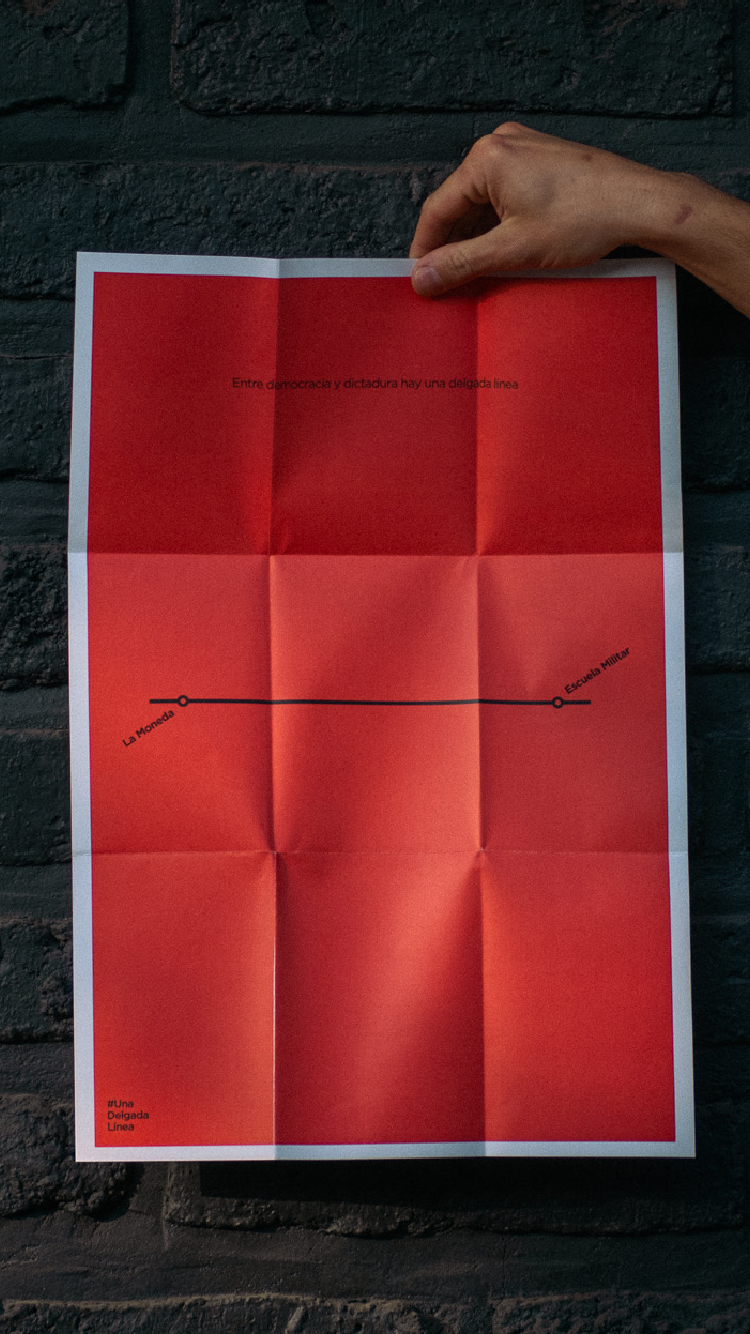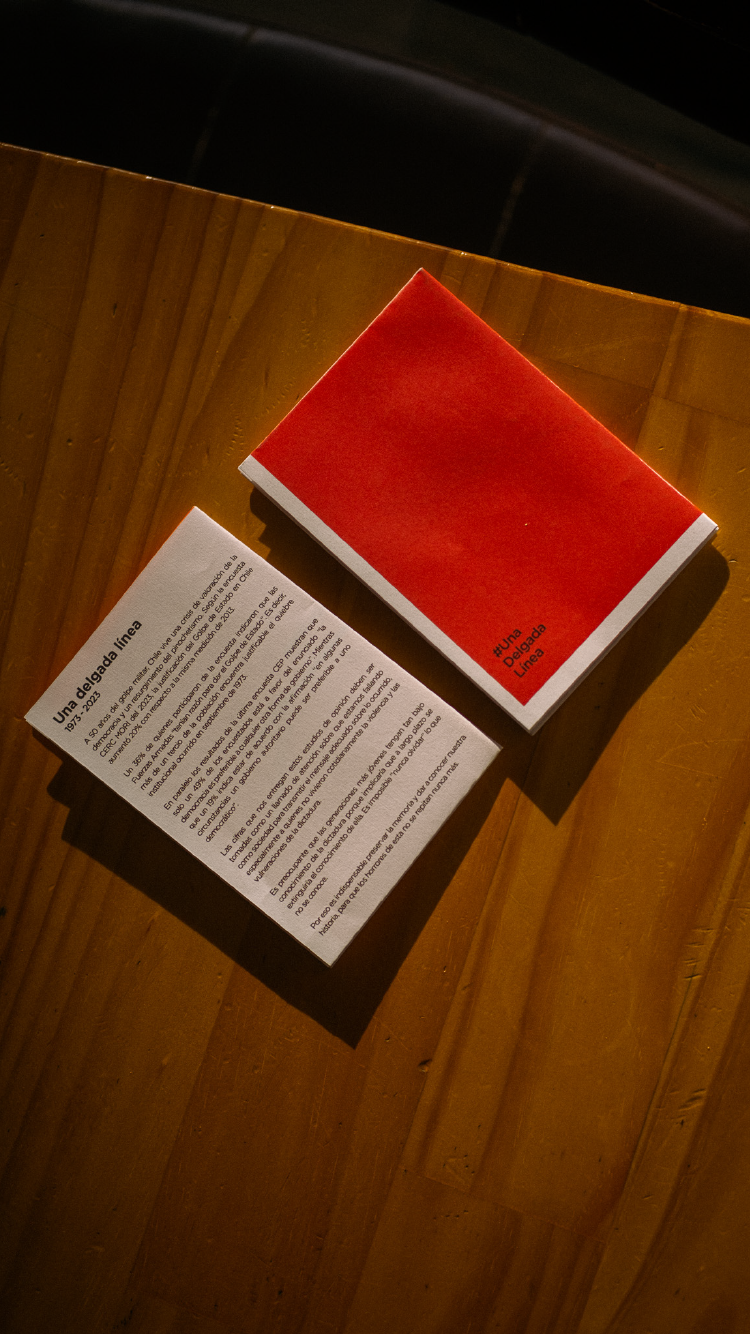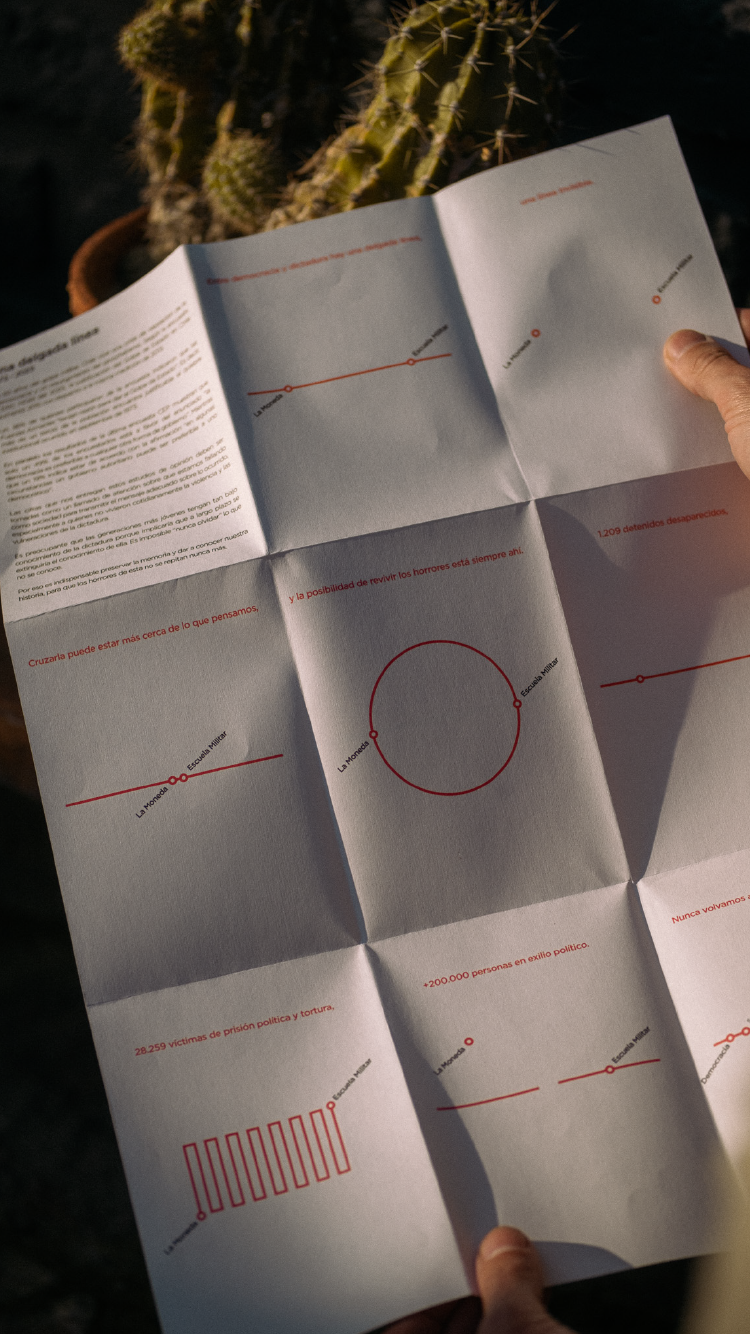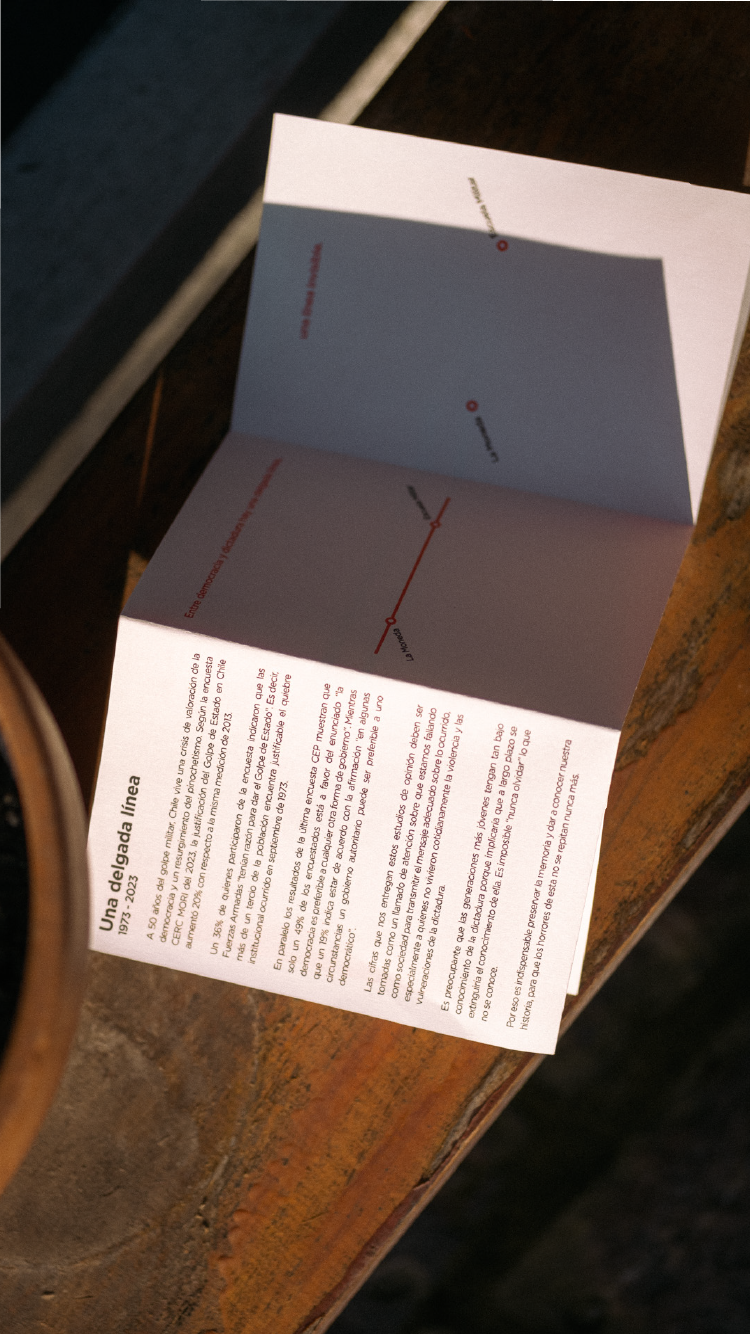UNA DELGADA LÍNEA
“Una Delgada Línea” es una obra gráfica que utiliza la iconografía del Metro de Santiago para reflexionar sobre la frágil línea que separa democracia de dictadura. La obra se basa en una coincidencia simbólica entre dos estaciones: La Moneda —sede del Palacio de Gobierno— y Escuela Militar, donde se orquestó el golpe de Estado. Ambas estaciones están conectadas por la misma línea y separadas por 11 estaciones.
Este breve recorrido se convierte en una metáfora visual de la historia reciente de Chile, un recordatorio de lo cerca que pueden estar la libertad y la opresión. El proyecto busca preservar la memoria y subraya la importancia de conocer nuestro pasado, porque solo así se pueden evitar que se repitan los horrores de la dictadura.
CONTEXTO
En 1973, Chile vivió un golpe de Estado que derrocó al gobierno democrático de Salvador Allende e instauró una dictadura militar liderada por Augusto Pinochet. Durante 17 años, el país estuvo marcado por violaciones a los derechos humanos, represión política y la profunda desarticulación de sus instituciones democráticas.
Cincuenta años después, lejos de consolidarse una visión unánime sobre la importancia de la democracia, las encuestas muestran señales preocupantes. Según el estudio CERC MORI (2023), el apoyo al golpe de Estado aumentó en 20% respecto a 2013. La encuesta CEP confirma la fragilidad de esta evaluación: solo el 49% de la población considera que “la democracia es preferible a cualquier otra forma de gobierno”, mientras que un 19% cree que “en algunas circunstancias, un gobierno autoritario puede ser preferible a uno democrático.”
A THIN LINE
“Una Delgada Línea” (A Thin Line) is a graphic work that uses the iconography of the Santiago Metro to reflect on the fragile line that separates democracy and dictatorship. The work is based on a symbolic coincidence between two stations: La Moneda - seat of the government palace - and Escuela Militar (Military School), where the coup d'état was orchestrated. Both stations connected by the same line and separated by 11 stations.
This short journey becomes a visual metaphor for Chile's recent history, a reminder of how close freedom and oppression can be. The project seeks to preserve memory and underscores the importance of knowing our past, because only then can we prevent the horrors of dictatorship from repeating themselves.
CONTEXT
In 1973, Chile experienced a coup d'état that overthrew the democratic government of Salvador Allende and ushered in a military dictatorship led by Augusto Pinochet. For 17 years, the country was marked by human rights violations, political repression, and the profound breakdown of its democratic institutions.
Fifty years later, far from consolidating a unanimous view on the importance of democracy, opinion polls show worrying signs. According to the CERC MORI survey (2023), support for the coup d'état increased by 20% compared to 2013. The CEP survey confirms the fragility of this assessment: only 49% of the population considers that “democracy is preferable to any other form of government,” while 19% believe that “in some circumstances, an authoritarian government may be preferable to a democratic one.”
Between democracy and dictatorship, there is a thin line.
An invisible line. Crossing it may be closer than we think, and the possibility of reliving the horrors are always there
1,209 disappeared detainees. 28,259 victims of political imprisonment and torture. +200,000 political exiles
Let's never cross this thin line again.
Democracy - Kidnappings, torture, and murders - Prohibition of political parties and trade unions - Human rights violations. Sustained increase in inequality - Political persecution, repression, and censorship. - Restrictions on freedom of expression. 14 years of curfew - Concentration camps - Dissolution of Congress - Torture centers - Dictatorship




The project consisted of a double-sided poster, printed in a limited edition of 100 copies. In addition, a video was produced for social media and an intervention was carried out in the Santiago Metro network, where the posters were displayed on station walls and distributed to passengers.